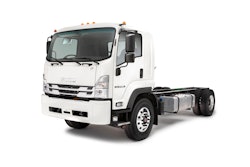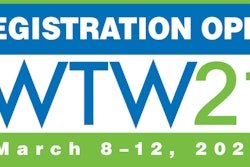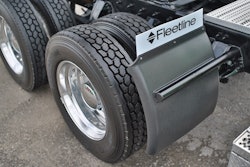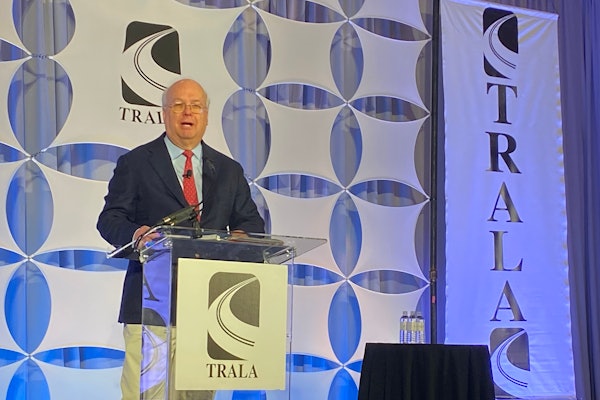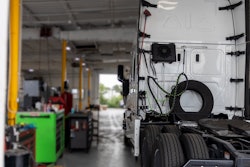 A look inside an Auto Truck Group upfit center.
A look inside an Auto Truck Group upfit center.With light- and medium-duty truck sales on a seemingly constant ascent, the need for upfitting solutions in the trucking industry continues to grow.
For truck dealers and specialty service operations already providing vehicle sales and/or custom body assemblies and maintenance, expanding one’s operation to provide upfit services is not a huge leap. But while the work is similar, such a jump should not be taken lightly.
Any business considering adding upfitting into its service offering or looking to increase the profitability of an underperforming upfit shop should make sure to follow these helpful tips.
Market your services
Truck upfitting is specialized, complicated work. Most service facilities don’t provide it. Shops that provide upfitting services should be aggressive in promoting their capabilities to any and all potential customers. Fleets that require upfitting are typically loyal to their service partners once they find one that is reliable and trustworthy.
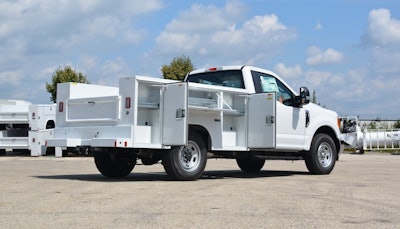 A Reading service body upfitted by Auto Truck Group.
A Reading service body upfitted by Auto Truck Group.Holman Enterprises, which provides truck upfitting solutions through its Auto Truck Group division, relies on its established sales and marketing teams to promote its total fleet solutions across North America, says John Hart, Auto Truck Group’s vice president of operations.
Unlike some upfit operations, which focus on specific vehicle types or are limited to a region, Hart says Auto Truck Group’s upfitting business, like Holman’s other divisions, is comprehensive in its capabilities. Though many of Auto Truck Group’s largest customers only require a few upfit configurations, Hart says the company’s sales and engineering teams associates never hesitate to inform customers that any configuration they request can be assembled and they typically collaborate closely with their customers to ensure the vehicle specifications are a match for the unit’s intended role. Being a one-stop solution and trusted partner is “part of Holman’s value proposition,” he says.
The Shyft Group, which includes the brands Utilimaster, Royal Truck Body, DuraMag, Magnum, Strobes-R-Us, Spartan RV Chassis and Builtmore Contract Manufacturing, also leverages a national sales support structure.
With existing customers, “client development managers maintain ongoing communication with our customers, fleet dealers, third-party distributors and automotive truck dealers,” says Chad Heminover, president, Shyft Fleet Vehicles and Services.
He adds The Shyft Group family of go-to-market brands also work in partnership with trade events, media engagement and networking opportunities, and engages with potential customers by deploying “a content-based demand generation model that includes digital advertising, webinars, advertising, thought leadership and outreach via trade shows and other networking opportunities.”
Ryan Widner says he’s taken a similar approach, focusing on customer engagement and communication, over the last 18 months leading the new upfitting operation at Swenson Products. Widner says Swenson Products entered the upfit market in 2019 to capitalize on a growing demand for the services within its customer base.
During his time as CEO, Widner has developed relationships with local utilities and municipalities and listed Swenson Products in the Sourcewell upfit vendor database to quickly introduce the company’s services to its potential customer base. He says active marketing is necessary if Swenson Products is to “become an industry leader” in upfitting like its other business units.
It also helps whenever possible to align with a truck OEM, either as vehicle dealer or preferred upfit center. Widner says such partnerships can provide access to customers otherwise unknown or unavailable.
Support your workforce
Widner says workforce has been another area of constant focus as he develops Swenson Products’ upfitting operation. By leveraging training programs provided by OEMs, suppliers and the NTEA, Widner says he was able to quickly develop a curriculum for his upfitting workforce to get the business off the ground. He’s also capitalized on ASE certification programs, sending his best technicians for accreditation, and has tasked his most experienced and veteran technician to serve as a mentor for some of his younger team members.
He says these efforts tie back to the company’s goal for the division — to become a trusted industry leader in its market area. Widner says technical proficiency and expertise is a necessity for that.
“We want to be able to talk to our customers as experts,” he says. “We want to be able to tell them how we do wiring, how we run hydraulic hoses, how we attach cabinets. We want them to understand we know the best way to build their truck.”
Auto Truck Group’s employee education initiatives are similar. Hart says the company maintains a detailed onboarding program that brings new associates up to speed on corporate and technical skills and, until COVID-19 hit, the program featured a network training component where technicians would travel to various Auto Truck Group locations to learn a multitude of upfitting and manufacturing disciplines. Technicians also undergo annual supplier training and are encouraged to pursue ASE certifications, which Hart says are rewarded with compensation and career advancement opportunities.
Upfitting technicians also require top-line equipment to do their jobs effectively. Asking a team of technicians to use less-than-optimal tools, share tools or follow antiquated assembly methods can reduce productivity and product quality.
 A Reading Truck Group technician working in its Bowmansville, Pa., facility.
A Reading Truck Group technician working in its Bowmansville, Pa., facility.Upfit customers use their trucks every day, that’s how they make their livelihood, says Ryan Reese, director of sales, East, Reading Truck Group. They can’t tolerate downtime of any kind and, unlike their heavy-duty truck owning counterparts, they can’t just rent or lease another truck and get back to work.
Agile operations capable of entering production quickly are vital.
At The Shyft Group, Heminover says the company’s flexible manufacturing approach “allows us to flex our operational configurations, as well as to be nimble and proactive to market needs. It provides us to the ability to design the work and space around specific builds or customer requirements. Flexible manufacturing also gives us the ability to quickly and cost effectively transform facilities and meet demand should there be a market shift.”
Understand your customer needs
Like any service offering, the key to profitability in upfitting is efficiency. Upfit centers that can turn trucks quickly without any production errors are extremely valuable.
Widner says Swenson Products avoids production delays by never entering production until a requested upfit configuration is fully understood by the business and confirmed by the customer. He says Swenson Products engages in multiple consultive discussions with customers before starting a build and, whenever possible, the company will request a customer bring in an existing truck for evaluation (if a new upfit configuration is similar to customer’s current equipment).
“If we have any problems or there’s any confusion, we want to address that first,” he says.
Reese says Reading Truck Group does the same, leveraging its sales and engineering teams to communicate with customers during the order process and upfit pre-work. Reese says Reading’s experts are always willing to provide design and component recommendations before a build is initiated if the customer requests, but he says they also are more than capable of receptively accepting and following through on a customer’s design requests.
 Utilimaster vans upfitted by The Shyft Group.
Utilimaster vans upfitted by The Shyft Group.“The most important aspect is understanding what their needs are,” he says.
The Shyft Group also begins production with a Needs Assessment discussion with customers.
“By understanding the challenges a customer is facing — getting to know their business and their customers — we provide well-thought-out and lasting solutions to those challenges based on Shyft’s collective experience, across brands,” Heminover says.
The potential for customer satisfaction and production efficiency also increases by the size of an upfitting order.
Hart says large order upfit contracts allow Auto Truck Group to leverage its scale to ultimately benefit the customer by developing and implementing a production process that maximizes efficiency. Hart says if a customer comes to Auto Truck Group looking to have two trucks built the company can certainly serve them but, operationally, Auto Truck Group’s locations are most efficient when a customer orders a large number of similar 200 trucks, not two.
“With large orders we will do a pilot build where will build one truck to ensure it comes together as envisioned,” he says. “Then we can bring that truck to the customer and they can review it.”
Once a pilot truck is built and approved, Hart says Auto Truck Group develops clear, distinct production instructions for the rest of the order.
“You don’t want to build 200 trucks and then deliver them and the customer says, ‘Uh oh, this doesn’t work,’” he says.

